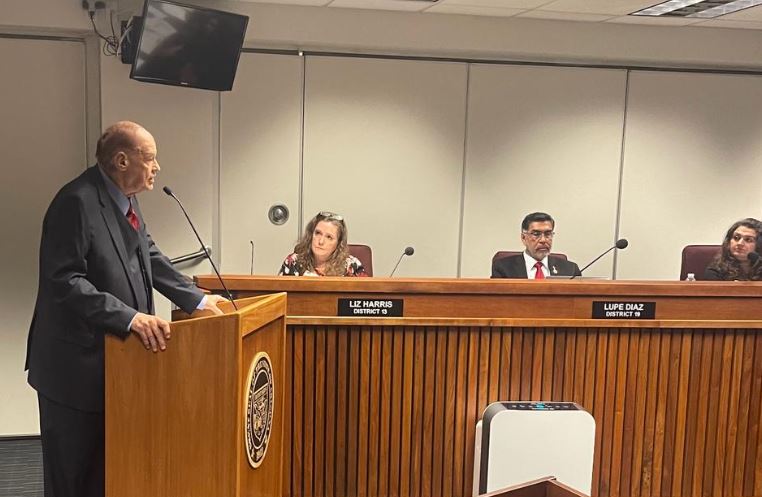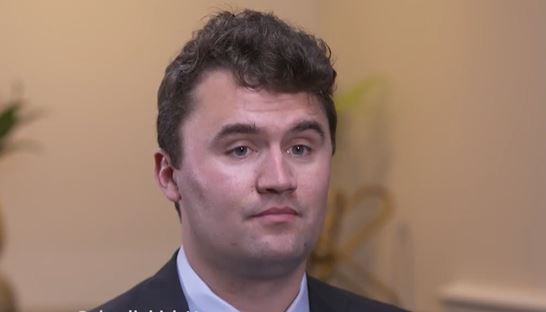
by Corinne Murdock | Feb 13, 2023 | Education, News
By Corinne Murdock |
Northern Arizona University (NAU) will provide free tuition regardless of income to Native Americans from Arizona tribes but requires other races to fall below a certain financial threshold to qualify. NAU President José Luis Cruz Rivera described the arrangement as a cornerstone for the university’s equity work.
“Ensuring access to an affordable, high-quality education is a key part of NAU’s vision to deliver equitable postsecondary value,” stated Cruz Rivera.
This arrangement falls under NAU’s financial aid program “Access2Excellence” (A2E) which launched last April. However, the university didn’t offer this free tuition for Arizona tribal members until last November, after NAU’s Native American Advisory Board pushed for its creation.
Initially, A2E was intended to provide tuition-free college for all students, regardless of race, if their household incomes were at or below $65,000. When A2E launched last spring, approximately 50 percent of Arizona households met that threshold.
NAU stated in a press release that the special free tuition offer for Native American students was part of its “strategic priority” to be the leading university serving Indigenous people nationwide. Ann Marie Chischilly, vice president of the Office for Native American Initiatives, said that this offering represented NAU’s commitment to prioritizing Native Americans.
“We are dedicated to being the nation’s leading institution serving the indigenous peoples and providing a clear and affordable pathway to an exceptional education,” said Chischilly.
Free tuition is one of the latest in NAU’s latest initiatives focused on uplifting Native Americans. In January, NAU pledged $10 million to prioritize Native American and Indigenous people in curriculum and recruitment efforts.
Last March, NAU launched multiple initiatives totaling $1.3 million to increase the number of both Native American and Hispanic science, technology, engineering, and math (STEM) graduates. These initiatives focus on training STEM faculty in anti-racism, revising graduate admissions processes to increase inclusivity and diversity, creating additional supports exclusively for Indigenous and Hispanic students, offering exclusive campus opportunities for Indigenous and Hispanic students’ families.
Department of Biological Sciences professor Catherine Propper predicted that these initiatives would increase anti-racist educational practices in education beyond NAU.
“In this way, we can bring about equity-oriented change in STEM fields by building leadership among faculty to contribute to institutional change, eliminate structural barriers and reduce disproportionality and systemic inequities in STEM fields,” said Propper.
Cruz Rivera asserted that greater funding and research efforts for recruitment, training, and placement on Native American and Hispanic students was an equitable necessity to spur these groups’ economic mobility.
“Together, we can propel more low-income, first-generation students and students of color to the middle-class and beyond,” said Cruz Rivera. “Support for HSIs will pave the way for less inequality, more social mobility and broader economic prosperity in America.”
In June 2021, the Arizona Department of Education (ADE) awarded NAU with $1 million to advance culturally responsive Native American pre-K-12 educators.
The A2E program goes into effect this fall. Those admitted to NAU for fall 2023 or spring 2024 semesters qualify.
Corinne Murdock is a reporter for AZ Free News. Follow her latest on Twitter, or email tips to corinne@azfreenews.com.

by Corinne Murdock | Feb 11, 2023 | Education, News
By Corinne Murdock |
This week, Desert Mountain High School (DMHS) put on a play exploring the sexuality of kids. It’s the latest display of the school’s promotion of minors’ sexualization.
The play, “She Kills Monsters,” tells the story of a high school senior, Agnes, discovering a journal containing the sexuality-based confessions of her younger, 15-year-old sister, Tilly, who died in a car accident.
The play comes in two editions: the traditional script for adults, and a “young adventurers” script intended for minors. The DMHS newsletter and flyer advertising their rendition of the play didn’t disclose whether the school would use the traditional or “young adventurers” version. The minor-oriented script retains frequent descriptions of and innuendos to sexual behaviors along with frequent expletives. The play displays the younger sister fantasizing about lesbian relationships with various “sexy” fictional female characters from a role-playing game, Dungeons & Dragons, including a demonic, leather-clad “dominatrix,” succubuses, and an elf.
The script describes Agnes as an overwhelmingly “average,” “drab” teenager who lacks creativity and understanding for her sister, while Tilly is depicted as an adventurous, bold, creative, and wise individual.
DMHS sold the play tickets for $10 to $12 each.
In a 2020 review of the play, New York Times described the minor-oriented script as a “hot school play” for youth to enjoy.
“This is a story in which girls wield swords, queer kids are cool, and nerds rule the earth,” stated the review.
DMHS is friendly to the exploration of children’s sexuality on campus, though they’re not as friendly to the parents who question what occurs during this exploration. In 2021, AZ Free News reported how DMHS delayed responding to parental inquiries about the Gender & Sexualities Alliance (GSA) chapter on campus.
Last year, a DMHS psychology teacher, Mackenzie Onofry, taught students unapproved material on the findings of debunked sexologist Alfred Kinsey. The material declared that only four percent of men and two percent of women were exclusively heterosexual, that sexuality is a continuum, that homosexuality spans human history and is a natural part of the animal world, that sexual orientation isn’t a choice and is immutable, that conversion therapy doesn’t work, that women have more erotic plasticity (sexual interests) than men, that homosexuality is a gene location on the X chromosome, that fetal testosterone exposure causes attraction to women, and that chances of male homosexuality increase by one-third with each son born.
Onofry remains employed by the district, according to her LinkedIn page.
DMHS’ district, Scottsdale Unified School District (SUSD) is aware and supportive of the high school’s initiatives for exploring minors’ sexuality and proclivity for keeping parents in the dark. Last month, it was discovered that SUSD falsely denied the existence of a transgender support plan for nearly a year.
Last year, SUSD’s social justice professionals promoted a drag queen storytime.
That summer, SUSD unintentionally provided a parent with blank transgender patient intake forms for a Phoenix hormone and gender transition facility in response to a records request regarding communications concerning DMHS librarian and GSA Club advisor Michelle Schulke.
Earlier that year it was discovered that Schulke was behind plans for sexuality and anti-racist programming for minors. Schulke also remains employed by the district.
SUSD Superintendent Scott Menzel has defended the normalization of sexualized campuses since joining the district in 2020. In response to parents upset by kindergarten and elementary school staff members discussing gender ideology to their children without consent, Menzel issued accusations of Civil Rights violations.
“To target an individual publicly for their personal identity — in this case the individual against whom this complaint was filed does not identify as either male or female — is overt discrimination and inconsistent with state and federal law as well as school district policy,” said Menzel.
Menzel also admonished parents and community members opposed to the district’s GSA clubs, calling them “bullies.”
Corinne Murdock is a reporter for AZ Free News. Follow her latest on Twitter, or email tips to corinne@azfreenews.com.

by Daniel Stefanski | Feb 10, 2023 | Education, News
By Daniel Stefanski |
Republicans led a bipartisan effort in the Arizona Legislature to raise the aggregate expenditure limit (AEL) for school districts in Fiscal Year 2023, easily avoiding a March 1 deadline to authorize the excess funds.
The action in the legislature took place this week, with the House passing its authorization on Tuesday and the Senate on Wednesday. Representative David Cook sponsored the legislation in the House and Senate Education Committee Chairman Ken Bennett led the charge in the Senate. Both the House and Senate cleared the legislation by the required two-thirds majority vote.
According to the release sent out by Arizona Senate Republicans, the legislation “authorizes school districts to spend the approximately $1.4 billion that exceeds the AEL due to last year’s historic investment made in public education. The AEL is a constitutional amendment passed by Arizona voters in 1980 as a way to limit rapid increases in government spending that are out of proportion to population growth and inflation.” The Arizona Senate’s fact sheet stated that “there is no anticipated fiscal impact to the state General Fund associated with this legislation.”
Many Arizona Republicans cheered this bipartisan achievement this week. Senate Education Committee Chairman Ken Bennett said, “Senate Republicans have an uninterrupted history of always allowing our K-12 public schools to spend the money appropriated to them by the Legislature, and this year is no different.”
Senate President Pro Tempore T.J. Shope wrote, “A big reason school districts hit the AEL cap is because Republicans have infused so much money into K-12 education.” Senate Majority Leader Sonny Borrelli stated, “We’ve also increased per pupil spending by more than 40% since 2015.”
House Sponsor David Cook was also appreciative after the Tuesday action by his chamber, tweeting, “The Arizona House of Representatives today approved my legislation to raise the AEL this year, so our schools can fully access the funds that the Legislature already appropriated for them.”
Republican Representative Matt Gress tweeted, “I’m proud to vote with my colleagues on a bipartisan basis to keep our schools open. This vote allows for the largest investment in K-12 education history.”
Arizona Democrats were very happy about the AEL’s authorization this week. Senate Democrats tweeted a picture of a group of members smiling in the Senate chamber because “we passed the AEL!” Senate Education Committee Ranking Member Christine Marsh said, “This is a strong show of bipartisanship and one I hope can continue as we identify a more permanent solution for our public schools.”
The path to arrive at passage of the AEL wasn’t without its challenges. Last year, some Democrats claimed that then-Governor Doug Ducey had promised to call a special session of the Arizona Legislature to authorize the AEL once the budget was signed into law. Governor Ducey’s office denied that this stipulation had been part of the bipartisan negotiations. There were also weeks of speculation that perhaps a special session would be called at the end of Ducey’s term, but nothing materialized.
Members of the Arizona Freedom Caucus also made their voices known about their preferences for systematic reforms being instituted “to benefit students, families, and teachers.” According to a press release from Senator Jake Hoffman, and shared by the @AZFreedomCaucus Twitter account, the reforms include “classroom 1st funding,” “back to the basics instruction,” “empowering parents through academic transparency,” “parent trust & empowerment,” “transparency in district finances,” and “protecting children from political ideologies.”
Senate President Warren Petersen seemed to echo some of these concerns in his statement for the State Senate Republican Caucus release touting the legislative victory: “In the coming weeks, we will be working with the Joint Legislative Audit Committee Chairman to investigate how these (education spending) dollars are being spent. With extra funding comes a greater responsibility from our K-12 public school districts to provide a better education for all students.” Senate Majority Whip Sine Kerr also added a statement of caution and future investigation, saying, “We have some of the best schools in the country found in Arizona, but at the same time, we have some of the worst underperforming schools, and we need to figure out why.”
Daniel Stefanski is a reporter for AZ Free News. You can send him news tips using this link.

by Daniel Stefanski | Feb 9, 2023 | Education, News
By Daniel Stefanski |
Democrats may have taken over most of the major statewide offices in Arizona in January 2023, but there’s one newly elected Republican officer who’s re-emerged on the scene and is ready to keep his promises to voters.
Tom Horne, Arizona’s Superintendent of Public Instruction, previously served in the office from 2003 to 2011, returning this year after defeating incumbent Kathy Hoffman by 9,100 votes. Last week, Horne gave a State of Education speech before the Arizona House Education Committee.
In Superintendent Horne’s presentation of the Strategic Initiatives for the State of Education, which was reviewed by AZ Free News, he laid out the future for his agency and the mission of his office. Superintendent Horne wants to “help and improve failing schools,” reinstate “test to graduate” policies, “teach curriculum bell to bell,” “regain structure in classrooms,” and “empower parents.”
Soon after the address to the committee, the Arizona Department of Education’s Twitter account posted, “Our administration has an ambitious agenda to fix our schools. We’ll prioritize education over distractions, create education improvement teams to support our schools, and bring back discipline to our classrooms so our teachers and students feel comfortable in their classrooms.” The account also thanked the Education Committee for inviting Superintendent Horne to present, stating, “The situation is grim with 2/3 of students below achievement levels. Our schools must teach our kids how to learn and not how to feel.”
When asked by AZ Free News about his thoughts on the address before the legislative committee, Superintendent Horne replied, “The Legislature appeared receptive to the Department’s mission of service to the schools and supportive of our priority to raise educational outcomes.”
Furthermore, when AZ Free News inquired about how he expects to work with legislators to accomplish his goals for this year – and throughout the duration of his term in office, Superintendent Horne said, “We all want schools where students can excel and feel safe.”
Not everyone was receptive toward Superintendent Horne’s presentation. Rep. Nancy Gutierrez, a member of the House Education Committee, tweeted, “I was quite concerned while listening that Social Emotional Learning was portrayed as CRT, that the focus will be on suspending and expelling students and that we will be relying on biased testing to determine success. This is not the best way to move forward.”
Superintendent Horne’s administration has already achieved significant accomplishments in its first month – especially with the Empowerment Scholarship Account (ESA) Program under the leadership of Christine Accurso, the Executive Director. As of February 1, the Arizona ESA program had 46,545 children enrolled. The program also averages approximately 900 phone calls and 140 new applications per day, per Accurso’s last report to parents. Accurso has moved quickly to bring staffing levels up to the Arizona Legislature’s expectations and to ensure that the program is following the legislators’ intent in every area.
Daniel Stefanski is a reporter for AZ Free News. You can send him news tips using this link.

by Corinne Murdock | Feb 8, 2023 | Education, News
By Corinne Murdock |
Arizona State University (ASU) Barrett Honors College faculty recruited students to oppose an upcoming event featuring conservative speakers. These educators stand opposed to their colleagues that organized the event, the T.W. Lewis Center for Personal Development.
The opposed speakers are Charlie Kirk, founder and president of activist group Turning Point USA; Dennis Prager, radio talk show host and founder of educational group PragerU; and Robert Kiyosaki, bestselling author of the top-selling personal finance book of all time and PragerU presenter. The trio are scheduled to speak Wednesday on “Health, Wealth, and Happiness.”
In a letter to Barrett Honors College Dean Tara Williams last Wednesday, the faculty members called Prager and Kirk “purveyors of hate,” and accused them of attacking women, “people of color,” LGBTQ+ individuals, and democracy-based institutions. The faculty dismissed Kiyosaki as a debunked sales schemer.
“By platforming and legitimating their extreme anti-intellectual and anti-democratic views, Barrett will not be furthering the cause of democratic exchange at ASU, but undermining it in ways that could further marginalize the most vulnerable members of our community,” read the letter. “Our collective efforts to promote Barrett as a home for inclusive excellence demand we distance ourselves from the hate that these provocateurs hope to legitimate by attaching themselves to Barrett’s name.”
The faculty also accused the trio of advancing an “anti-intellectual agenda” because they have challenged the necessity of a college education, the hypocrisy over the use of the “n-word,” the problematic nature of Black History Month, the acceptance of transgenderism and gender ideology, and the integrity of the 2020 election.
Although ASU hasn’t indicated that it would cancel the event, AZ Free News was informed that on-campus marketing of the event was removed following the Barrett faculty complaints.
39 of 47 Barrett faculty members signed onto the letter: Abby Loebenberg, Abby Wheatley, Adam Rigoni, Alex Young, April Miller, Benjamin Fong, Christiane Fontinha de Alcantara, Dagmar Van Engen, David Agruss, Don Fette, Elizabeth Meloy, Gabriella Soto, Georgette Briggs, Irina Levin, Jacquie Scott, Jennifer Brian, John Lynch, Joseph Foy, Joseph O’Neil, Laura Jakubczak, Laurie Stoff, Lisa Barca, Mathew Sandoval, Matthew Voorhees, Michael Ostling, Mina Suk, Nilanjana Bhattacharjya, Peter Schmidt, Phillip Cortes, Rachel Fedlock, Rebecca Soares, Robert Mack, Sarah Graff, and Taylor Hines.
Levin, a Barrett faculty affiliate, told The State Press, ASU’s student-run newspaper, that she was shocked that ASU would allow this event and claimed that the guest speakers weren’t aligned with Barrett principles.
Ostling claimed that their signatures each represented different reasons for opposing Kirk, Prager, and Kiyosaki on campus, and that they weren’t advocating for the cancellation of the event.
“I believe these speakers represent ideas that go against the principles of the ASU charter that stands for inclusivity and not exclusivity,” said Ostling.
Multiple faculty members from the letter liked tweets that accused Prager and Kirk of being “white nationalists.”
On her since-deleted Twitter account, Miller, an Honors Faculty Fellow, accused ASU of “[selling] its soul to the ‘highest’ bidder.”
“When your college sells its soul to the ‘highest’ bidder, this is the result. What an outrageous embarrassment. Money over ethics, donors before students,” tweeted Miller.
Miller also emailed the condemnation letter to her students. Although Miller alleged in the email that she supported free speech in universities, even controversial speech, she said she opposed controversial speakers that donate to the college. Miller further claimed that Prager, Kirk, and Kiyosaki held beliefs that were beyond the scope permitting ideological debate.
“This is not a simple issue of partisan politics; these two speakers are known for, among other things, spreading: exceedingly hateful rhetoric that is harmful to many marginalized communities; anti-public education platforms; and health/medical disinformation— all of which go against the values and purposes of a post-secondary institution like Barrett and ASU,” wrote Miller.
Other Barrett faculty reportedly imposed similar pressure on their students. However, students have been reluctant to produce these documents; AZ Free News received information that students have expressed fear of retaliation from Barrett faculty and their peers if they express dissenting opinions or support for the event.
Young, also an Honors Faculty Fellow, tweeted that only those with a certain level of competence were allowed to engage in discourse — implying that this caveat disqualifies Prager, Kirk, or Kiyosaki. Young then claimed that those who issued public response to the letter had incited threats against their jobs and lives.
In a separate tweet, Young explained that the faculty members behind the condemnation letter were upset they hadn’t been consulted about the speaker selection for the event.
Prager’s educational organization, PragerU, publicized the Barrett faculty condemnation letter on Friday.
Additionally, three ASU professors issued a response letter via The Daily Wire to the Barrett Honors condemnation letter. These three professors were Jonathan Barth, associate history professor and associate director of the ASU Center for American Institutions; Donald Critchlow, history professor and director of the ASU Center for American Institutions; and Owen Anderson, philosophy and religious studies professor.
Barth, Critchlow, and Anderson said they didn’t support the suppression of speech advocated by the Barrett faculty members. They noted that ASU President Michael Crow has a long history of supporting intellectual diversity, even amid opposition. The three men said that the Barrett faculty were intentionally intimidating their peers and students, thereby destroying the free and open exchange of ideas.
“Faculty letters like the one condemning Dennis Prager and Charlie Kirk reinforce campus conformity and function as a not-so-subtle way to intimidate and silence would-be dissenters among the faculty and student body,” stated the trio.
Corinne Murdock is a reporter for AZ Free News. Follow her latest on Twitter, or email tips to corinne@azfreenews.com.

by Corinne Murdock | Feb 7, 2023 | Education, News
By Corinne Murdock |
Northern Arizona University (NAU) pledged $10 million to prioritize Indigenous people in their curriculum, or “indigenize” it. The funds will build up the Seven Generations Signature Initiative (7SGI) for the next three years starting this spring.
$5 million of the funding comes from the Mellon Foundation, a New York-based grantmaking nonprofit; the other half came from the NAU Foundation (NAUF). NAU classifies Indigenous peoples as Native Americans/American Indians), Alaskan Natives, Native Hawaiians, Native Pacific Islanders, and other global Indigenous peoples.
The funding will back development of an Indigenous-focused open educational resources initiative; increase recruitment of faculty advancing Indigenous-focused scholarship; establishment of a new center for Indigenous “knowledge holders,” partners, artists, and tribal leaders; and expansion of a Indigenous-focused housing program that serves around 150 students, or .5 percent of the student population.
According to NAU data, there were just over 900 students (3.2 percent) who identified solely as Indigenous. 841 students (2.9 percent) identified as Native American or Alaskan Native, while 68 students (0.2 percent) identified as Native Hawaiian or Native Pacific Islander.
With multiple races factored, over 1,900 students (6.7 percent) identified as Indigenous. Over 1,500 (5.3 percent) identified as Native American, Alaskan Native, Native Hawaiians, or Native Pacific Islander.
In a press release last month, NAU President José Luis Cruz Rivera expressed hope that the university would become the national leader in service to Indigenous people.
“The breadth of this $10 million Seven Generations Signature Initiative demonstrates how NAU has infused its commitment to Indigenous Peoples into all our work, from leading scholarship and meaningful engagement to student belonging and success,” said Rivera.
Lena Fowler, NAU Indigenous Advisory Board chair, said that this $10 million funding would ensure that the university was a “home-away-from-home” for Indigenous students.
Armando Bengochea Mellon Foundation senior program officer said that indigenizing the curriculum was “bold, inspiring, and necessary.”
NAU derived 7SGI after producing their roadmap for the next several years, “NAU 2025 – Elevating Excellence,” which focuses mainly on advancing diversity, equity, and inclusion (DEI). The roadmap made a specific commitment to expand the focus on Indigenous students, faculty, and staff.
Specifically, the roadmap promised to establish Indigenous-specific pre-college pathways and recruitment, culturally responsive programming and pedagogy, and campus environments to increase Indigenous enrollment and retention. It also promised to implement equitable, not equal, efforts to recruit, retain, and support Indigenous faculty and staff. Equity orchestrates exact equal outcomes, while equality affords equal resources or opportunities.
Under this roadmap so far, NAU also funded thousands for a project expanding “Indigenous Pathways to a PhD in STEM-H.” The university is currently processing further proposals under its $1 million second call for proposals. Awards will be announced in April.
NAU also expanded its initiative affording free tuition to Native Americans from any of Arizona’s 22 federally recognized tribes last November, regardless of household income. However, non-Native American applicants are only eligible for free tuition if they’re first-time undergraduate students with a family income of $65,000 a year or less.
The decision to prioritize Native American Arizonans over non-Native American Arizonans reflects NAU’s commitment to equity over equality.
Corinne Murdock is a reporter for AZ Free News. Follow her latest on Twitter, or email tips to corinne@azfreenews.com.






